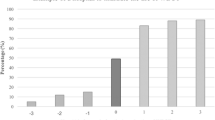Abstract
Objective
Computed tomography (CT) scanning of the chest is increasingly utilized to evaluate thoracic injuries in multiple trauma (MT) patients. Studies exploring the effects of chest CT scanning on the patient care and outcome of MT victims compared to chest X-ray (CXR) reported conflicting results. Hereby, researchers sought to investigate the therapeutic plan alteration rate in MT patients after obtaining a chest CT scan.
Methods
117 MT patients who had obtained a CXR before undergoing chest CT scanning were included in the study. Researchers extracted demographic characteristics, mechanisms of trauma, physical examination and imaging findings, and a list of diagnostic and therapeutic interventions from the patients' medical records. The rate of therapeutic plan alteration following chest CT scanning was then calculated.
Results
Road traffic accident was the most common mechanism of injury. CXR failed to identify any positive findings in 72.6% of the patients, while 59% had normal chest CT scans. Chest CT scan detected a mean of 0.42 (SD = 1.43) and 2.78 (SD = 1.28) new findings in each patient with normal and positive CXR, respectively. Patients having at least one new finding in chest CT scan more frequently received therapeutic interventions. There was a statistically significant alteration of the management plan between patients with or without new findings in chest CT scan.
Conclusion
Although the benefits of chest CT scanning are undoubted in some instances, not all of the previous studies argue in favor of implementing routine chest CT scanning in first-line care of MT patients. Further research is required to unify the inconsistent results previously reported in similar studies.

Similar content being viewed by others
Data availability statement
The datasets generated during and/or analyzed during the current study are available from the corresponding author on reasonable request.
References
Dogrul BN, Kiliccalan I, Asci ES, Peker SC. Blunt trauma related chest wall and pulmonary injuries: an overview. Chin J Traumatol. 2020;23(3):125-138.2.
Khandhar SJ, Johnson SB, Calhoon JH. Overview of thoracic trauma in the United States. Thorac Surg Clin. 2007;17(1):1–9.
Blecher GE, Biswadev M, Peter AC, Mark F. Failed Emergency Department disposition to the ward of patients with thoracic injury. Injury. 2008;39(5):586–91.
Mirka H, Ferda J, Baxa J. Multidetector computed tomography of chest trauma: indications, technique and interpretation. 2012;3(5):433–49.
Mirvis S, Kostrubiak I, Whitley N, Goldstein L, Rodriguez A. Role of CT in excluding major arterial injury after blunt thoracic trauma.. 2012;149(3):601–5.
Guerrero-López F,Vázquez-Mata G, Alcázar-Romero PP, Fernández-Mondéjar E, Aguayo-Hoyos E, Linde-Valverde CM. Evaluation of the utility of computed tomography in the initial assessment of the critical care patient with chest trauma. Crit Care Med. 2000;28(5):1370–5.
Kea B, Gamarallage R, Vairamuthu H, Fortman J, Lunney K, Hendey GW, et al. What is the clinical significance of chest CT when the chest X-ray result is normal in patients with blunt trauma? Am J Emerg Med. 2013;31(8):1268–73.
Brink M, Kool DR, Dekker HM, Deunk J, Jager GJ, van Kuijk C, et al. Predictors of abnormal chest CT after blunt trauma: a critical appraisal of the literature. Clin Radiol. 2009;64(3):272–83.
Brink M, Deunk J, Dekker HM, Kool DR, Edwards MJR, Vugt AB van, et al. Added value of routine chest MDCT after blunt trauma: evaluation of additional findings and impact on patient management. 2012;190(6):1591–8.
Trupka A, Waydhas C, Hallfeldt K K, Nast-Kolb D, Pfeifer K J, Schweiberer L. Value of thoracic computed tomography in the first assessment of severely injured patients with blunt chest trauma: results of a prospective study. J Trauma [Internet]. 1997;43(3):405–11 (discussion 411).
Butcher N, Balogh ZJ. The definition of polytrauma: the need for international consensus. Injury. 2009;40(Suppl 4):S12-22.
Hammad A-MM, Regal MA. Is routine spiral CT-chest justified in evaluation of the major blunt trauma patients? Eur J Trauma Emerg Surg. 2008;35(1):31–4.
Chardoli M, Hasan-Ghaliaee T, Akbari H, Rahimi-Movaghar V. Accuracy of chest radiography versus chest computed tomography in hemodynamically stable patients with blunt chest trauma. Chin J Traumatol. 2013;16(6):351–4.
Agladioglu K, Serinken M, Dal O, Beydilli H, Eken C, Karcioglu O. Chest X-rays in detecting injuries caused by blunt trauma. World J Emerg Med. 2016;7(1):55.
Safari S, Farbod M, Hatamabadi H, Yousefifard M, Mokhtari N. Clinical predictors of abnormal chest CT scan findings following blunt chest trauma: a cross-sectional study. Chin J Traumatol. 2020;23(1):51–5.
Moussavi N, Ghani H, Davoodabadi A, Atoof F, Moravveji A, Saidfar S, et al. Routine versus selective chest and abdominopelvic CT-scan in conscious blunt trauma patients: a randomized controlled study. Eur J Trauma Emerg Surg. 2018;44:9–14.
Shelmerdine SC, Langan D, Hutchinson JC, Hickson M, Pawley K, Suich J, Palm L, Sebire NJ, Wade A, Arthurs OJ, DRIFT Study Research Group. Chest radiographs versus CT for the detection of rib fractures in children (DRIFT): a diagnostic accuracy observational study. Lancet Child Adolesc Health. 2018;2(11):802–11.
Battle CE, Hutchings H, Evans PA. Risk factors that predict mortality in patients with blunt chest trauma: a systematic review and meta-analysis. Injury. 2012;43(1):8–17.
Barrios C, Malinoski D, Dolich M, Lekawa M, Hoyt D, Cinat M. Utility of thoracic computed tomography after blunt trauma: when is chest radiograph enough? 2009;75(10):966–9.
Lang P, Kulla M, Kerwagen F, Lefering R, Friemert B, Hans-Georg Palm HG. The role of whole-body computed tomography in the diagnosis of thoracic injuries in severely injured patients—a retrospective multi-centre study based on the trauma registry of the German trauma society (TraumaRegister DGU®). Scand J Trauma Resusc Emerg Med. 2017;25:82.
Chapman BC, Overbey DM, Tesfalidet F, Schramm K, Stovall RT, French A, et al. Clinical utility of chest computed tomography in patients with rib fractures CT chest and rib fractures. Arch Trauma Res [Internet]. 2016;5(4):37070.
Singleton JM, Bilello LA, Canham LS, Levenson RB, Lopez GJ, Tadiri SP, et al. Chest computed tomography imaging utility for radiographically occult rib fractures in elderly fall-injured patients. J Trauma Acute Care Surg [Internet]. 2019;86(5):838–43.
Funding
N/A.
Author information
Authors and Affiliations
Corresponding author
Ethics declarations
Conflict of interest
The authors have no relevant financial or non-financial interests to disclose.
Ethical approval and informed consent
This retrospective was conducted on available data, therefore, was approved by the ethical committee and received registration number of IR.TUMS.IKHC.REC.1398.112.
Research involving human participants and/or animals
We used the human participants data without any human intervention.
Additional information
Publisher's Note
Springer Nature remains neutral with regard to jurisdictional claims in published maps and institutional affiliations.
Rights and permissions
Springer Nature or its licensor (e.g. a society or other partner) holds exclusive rights to this article under a publishing agreement with the author(s) or other rightsholder(s); author self-archiving of the accepted manuscript version of this article is solely governed by the terms of such publishing agreement and applicable law.
About this article
Cite this article
Soltanpour, B., Akhgar, A. & Jalili, M. Chest computed tomography scan alters the management plan in multiple trauma patients with a prior chest X-ray. Chin J Acad Radiol 6, 82–88 (2023). https://doi.org/10.1007/s42058-022-00110-9
Received:
Revised:
Accepted:
Published:
Issue Date:
DOI: https://doi.org/10.1007/s42058-022-00110-9




